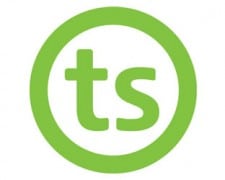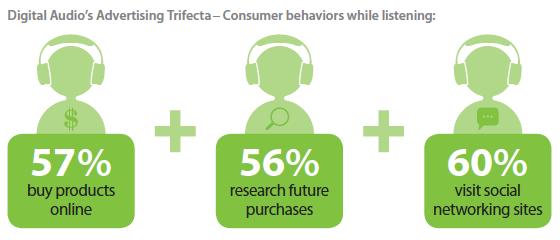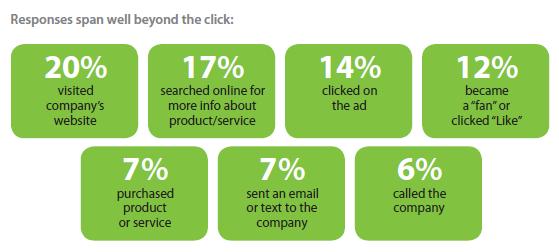 TargetSpot, the largest digital audio advertising network, announced the results of its new study, conducted by Parks Associates. It unveils key, new insights about what drives response and engagement in digital audio advertising, and further illustrates the increasing effectiveness of the platform for reaching and interacting with consumers.
TargetSpot, the largest digital audio advertising network, announced the results of its new study, conducted by Parks Associates. It unveils key, new insights about what drives response and engagement in digital audio advertising, and further illustrates the increasing effectiveness of the platform for reaching and interacting with consumers.
Key findings include the importance of perceived value for the listener, proper targeting and customized messaging in order to maximize advertising recall and response.
RBR-TVBR asked TargetSpot CEO Eyal Goldwerger: As companies like Google and Facebook are having issues monetizing mobile, how do the results of this study contrast with the problems they’re having and show that what you’re offering on mobile will be more appealing to agencies and advertisers?
“For many forms of advertising, we’re moving from a large-screen, desktop environment to a small real estate on a small screen. It does not take a rocket scientist to realize that a large banner or video on a full screen will be more impactful. At the same time, audio is absolutely uniquely primed for huge success in audio. In audio advertising, the user experience is identical—whether listening on a large computer or a smartphone—in-car, walking—you’re still listening with the same pair of ears. Add to that captive user attention, geo-targeting, etc., and that is a very exciting proposition to our market.”
He adds, “While people are listening on mobile phones, putting an ad in front of them is not very effective, because the listener also is mobile and usually not looking at the screen.”
So it’s true—small screens are not as effective with visual ads as the laptop or PC. With audio, it makes no difference what the size of the device is.
Back to the study:
Digital Audio listeners already derive additional value from their listening experience through the interactive elements that the medium provides. The same expectation applies to Digital Audio advertising: the majority of listeners don’t mind ads if they think they will receive something in return. 59% of Digital Audio listeners like to get coupons, special offers or discounts; 55% don’t mind ads as long as they have free access to favorite stations, and 37% are willing to “like” an ad in order to receive discounts or special promotions for the product/service.
Listeners are also happy to receive branded stations and playlists from advertisers because they value the content. In fact, 34% said they are more likely to remember an advertiser if the media player has the advertiser’s logo or design, 30% said that branded stations improved their perception of the sponsoring advertiser and 27% said they were more inclined to buy products from the sponsoring brand.
Mobile devices provide another platform for advertisers to reach a receptive and ever-increasing Digital Audio audience. 27% of Digital Audio listeners do not mind getting ads on their mobile device for products/services they are interested in and the same percentage does not mind being targeted based on their physical location.
Advertising to the interested
Digital Audio listeners are highly accepting of targeted advertising: 65% are comfortable receiving ads based on their personal profiles and 70% are comfortable receiving ads based on their Internet Radio usage and/or content preference. Additionally, listeners to multiple Internet Radio stations are 65% more comfortable being targeted based on their profile and 52% more comfortable being targeted based on their usage and content preferences than are single-site listeners.
Targeted advertising content resonates with Digital Audio listeners because it speaks directly to specific audiences and appeals to their individual interests. Correctly targeting the listener is critical, as is the creative messaging, since 35% of consumers who responded to a Digital Audio ad believe they were personally targeted. Additionally, Internet Radio listeners who listen across multiple Internet Radio sites are even more likely to feel ads are specifically speaking to them compared to single-site listeners. Nearly 39% of respondents to Internet Radio ads who listen to multiple stations daily believe they are being targeted by ads, versus 21% of those who listen to only one Internet Radio station.
Digital Audio advertising effectiveness metrics indicate that recall and response are high and increasing year over year. 58% of Internet Radio listeners recall having seen or heard an Internet Radio ad in the last 30 days, up 12% from last year. Of those who recalled an Internet Radio ad, 44% responded to it in some way, up 10% from last year.
And, since one way Digital Audio users maintain a connection to their listening experience is by changing stations, it correlates that multi-site listeners are even more responsive to advertising: 66% recall seeing or hearing an Internet Radio ad, and of these, 52% responded to it in some way — 18% more than single-site listeners.
Relevance and proximity are key drivers of response. 52% of listeners who do not normally click on ads say that a relevant ad might lead them to visit an advertiser’s web site later. 30% are more likely to respond to an audio ad if there is an accompanying display ad on the web page.
Personally relevant ads appeal to digital audio listeners and drive high response rates. However, even when digital audio listeners do not perceive ads to be particularly pertinent to them, they are more accepting of them and less likely to stop listening than are listeners to traditional Broadcast AM/FM Radio. 26% of Broadcast AM/FM listeners stopped listening because they did not find an ad personally relevant, compared to only 20% of Internet Radio listeners.
Click to download the full study here (PDF)
RBR-TVBR observation: When more OEM factory car radios will allow complete integration with the smartphone into the dash—and more apps like iHeart and Pandora make it easy to tune in–people will be wondering why they are paying for satellite radio. As you can see from the study, most people don’t mind hearing the minimal ads inserted, as long as it’s still free. When more cellular providers offer unlimited data plans, this will only increase mobile listening, too. So it’s really important for radio stations to keep concentrating on their mobile streams.







